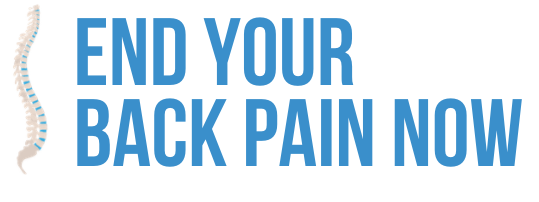You know the feeling. That achy, twingy, “feeling-like-you’re-gonna-lock up” in the lower back feeling when you bend forward to do even the simplest task.
Well, have no fear! I’m going to show you the best way to handle this situation without further aggravating your lower back when bending.
How to Bend and Lift Safely As a Back Pain Sufferer
Normally, when no back issues are present, we can round our backs to bend and lift light items from the ground, bend over a sink to do dishes, or perform other basic tasks without a problem.
When you have back pain, however, this is frequently a problem. The forward rounding position of the back (called flexion) stimulates a guarding response as your body feels a “threat” from moving into that position.
This response may be for a completely valid reason (for example pressure on a disc thats bulging or spinal joints aren’t moving correctly), or it may be due to lack of strength and/or endurance of the back muscles.
Stop Hanging Off Your Back Ligaments
As we bend forward, it forces our back muscles are work harder to keep us upright. At a certain point of forward bending, our muscles disengage and we get to the point of “hanging” on our spinal ligaments.
This can give the appearance of relief from discomfort because the muscles relax, but as I explain in the video above, hanging on these ligaments for extended periods of time may provoke inflammation and even weakening over time. This is NOT what you want.
Tip From Your Hips
Bending forward from your hips rather than your spine forces your muscles to work while maintaining the position of the spine. Since the butt muscles (glutes) are very well equipped to doing this job, you will feel much less stress in your lower back because the work is being shared between the spinal muscles, the glutes and the hamstrings.
The best way to accomplish this is with the use of a dowel rod (shown in above video) or with a simple broomstick. Hold the stick behind your back, and it should make 3 points of contact:
- Tailbone
- Mid-spine
- Back of head
The next step is to unlock your knees, and shift your weight back toward your heels. While maintaining the 3 points of contact, bend at your hips.
You can continue to bend until you reach the desired bend to perform your activity or until you start to feel any discomfort. If you start to feel any pain, bend your knees a bit more to get your body more upright. This will reduce the workload on the back muscles.
But how do I get down to the floor??
What are you going to notice is that there is virtually NO way you would be able to maintain this alignment and get down toward the floor to pick something up. This is EXACTLY why you would continue to bend your knees until you can reach to pick something up. We call this a SQUAT.
I’ll save the “why you need to squat if you have back pain” for another post, but you can easy see why this is super important.
Using the Bending Movement as an Exercise
This movement is often one of the first exercises I teach my personal clients. Being able to achieve this position is crucial in order to protect your back, but you also need to strengthen these muscles to improve tolerance to repetitive activity. The Reverse Hyperextension is also a great option to isolate these muscles and build endurance.
